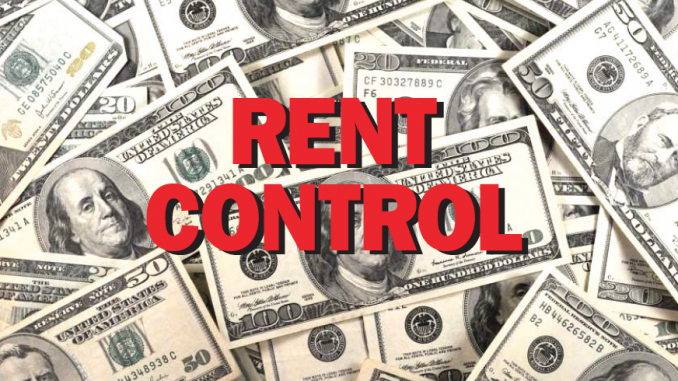
By SOPHIA BOLLAG
Associated Press Writer
Californians who rent apartments built after 1995, single-family homes or condominiums have limited protections from rising prices under a state law passed that year that significantly restricts rent control.
That could change if voters pass Proposition 10 in November.
The ballot measure would let cities and counties across California expand or enact rent control by overturning the 1995 law, the Costa-Hawkins Rental Housing Act.
It’s one of the highest profile and most expensive issues this election season as California faces a massive housing shortage and steeply climbing rents. Proposition 10 supporters argue rent control is necessary to keep low-income and disenfranchised Californians in their homes. Opponents say it will lower real estate values, further decreasing the state’s already-limited housing supply and stifling building. Economists widely agree rent control ultimately limits supply.
Nearly a third of California renters spend more than half of their income on rent, according to the state. Projections estimate California needs to roughly double its rate of housing production to meet its growing population’s needs by 2025.
In Los Angeles, the median estimated rent for a 1 bedroom was over $2,300 per month in August, according to real estate website Zillow. In San Francisco, it’s more than $3,600 per month.
“No other part of the country has seen rents increase as quickly or as much as California,” said Zillow economist Aaron Terrazas. “Whenever rents are rising particularly quickly, there’s no question that people have trouble keeping up.”
More than a dozen California cities already have some rent control on older properties, including Los Angeles, San Francisco, East Palo Alto, Mountain View and Berkeley. Proposition 10 would give local governments more flexibility to implement or expand rent control rules while guaranteeing landlords the right to a fair rate of return on their investment. Rent control policies range from curbing how much landlords can raise rents each year to limiting what they can charge new renters.
Supporters including the AIDS Healthcare Foundation, a non-profit known for wading into hot-button political issues, have contributed more than $14 million to back Proposition 10. Rental companies and other opponents have poured more than $47 million into the “no” campaign.
A poll released in September by the nonpartisan Public Policy Institute of California found 36% of likely voters plan to vote for the measure, with 48% saying they’ll vote no and 16% undecided.
Berkeley is one city that would see an immediate effect if Proposition 10 passes. Landlords in the East Bay city used to be limited in what they could charge new renters to prevent price spikes when one tenant moved out and another came in.
But state lawmakers outlawed that practice, known as “vacancy control,” with the 1995 law. It would be reinstated in Berkeley if Proposition 10 passes.
Other cities are already discussing proposals to enact or expand rent control.
In Oakland, rent control only applies to buildings constructed before 1983. City Councilmember Dan Kalb said he thinks the city, which borders Berkeley, would move to expand rent control if Proposition 10 passes but continue to exempt brand new construction.
“We need to have tools in our toolbox to protect as many of our renters as possible so they can continue to live in the city,” he said.
Supporters of rent control say it’s one tool to help alleviate the state’s housing crisis. They’re taking the issue directly to voters after legislative efforts to allow more rent control failed.
“Building at the scale we need will take decades,” said Christina Livingston, one of the initiative’s backers. “But families are being kicked out of their homes right now.”
The nonpartisan Legislative Analyst’s Office says Proposition 10 will lower the value of rental properties. Economic research “overwhelmingly” shows that although rent control benefits some individual renters, overall it limits supply and raises rents because it decreases incentive to build, Terrazas said.
Proposition 10 opponents also argue it would drive small landlords out of business.
“This will make a bad problem worse,” said Steve Maviglio, the anti-Proposition 10 campaign spokesman.
Decreasing regulations on construction and providing more money for affordable housing are better steps the state could take to alleviate the housing crisis, opponents argue.
Two other measures on the ballot are aimed at providing more money for housing. Proposition 1 would authorize $4 billion in bond funding to house low-income people, veterans and farmworkers. Proposition 2 would authorize $2 billion in bond funding to house people who are homeless or at risk of becoming homeless. The Proposition 2 bond would be repaid using money from the California millionaire’s tax that provides revenue for mental health services.



